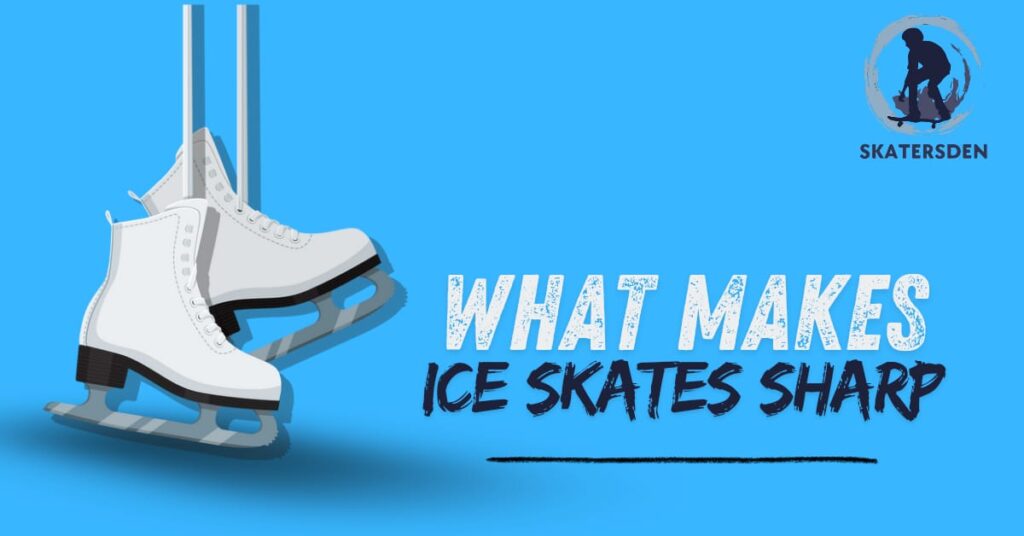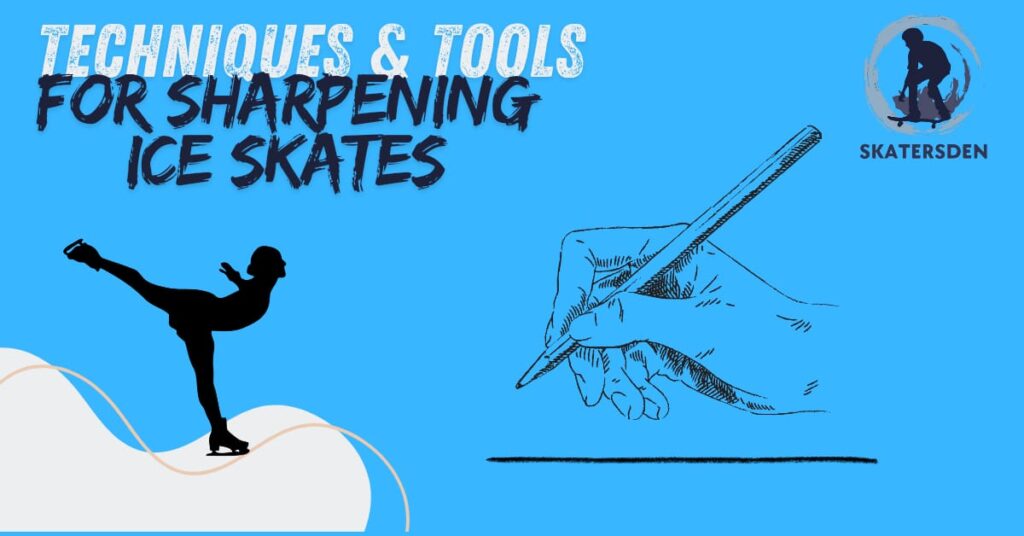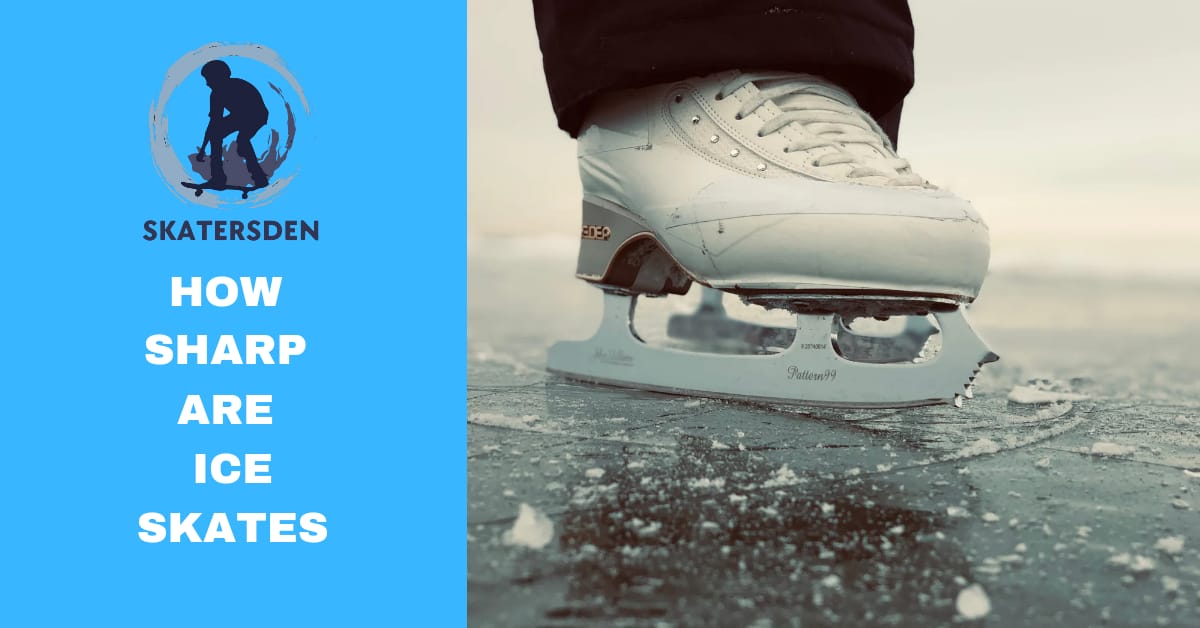Ice skates might seem like simple footwear, a tool for gliding over frozen surfaces, but there’s a fascinating science behind their sharpness. Their edges are essential for gaining traction and stability on the ice, allowing skaters to perform precise movements and turns. But how sharp are ice skates in reality?
To answer this question, we turned to experts in the field who have years of experience both on and off the ice. We spoke with professional figure skaters, coaches, and even a materials scientist to gain insight into the sharpness of ice skates.
What Makes Ice Skates Sharp?

Ice skates are designed with a metal blade that has two edges, separated by a concave section known as the “hollow.” This hollow is what allows skates to grip the ice, enabling precise movements. The sharpness of these edges determines how well the skates can cut into the ice. A sharper edge provides better grip, which is essential for maneuvers and speed in skating.
Despite what one might think, ice skates aren’t razor-sharp. Instead, they’re meticulously honed to provide the right balance between grip and glide. The blades are sharpened at a specific angle, typically ranging from 9/16 to 5/16 of an inch, which affects how the skate interacts with the ice.
How Ice Sharpness Affects Performance
The sharpness of your ice skates influences your control of the ice. Sharper skates allow for quicker turns and stops, providing an advantage in sports like hockey and figure skating. They also enhance stability, which is crucial for executing jumps or smooth moves on the rink.
However, there’s a trade-off. While sharper skates offer more control, they can also dig into the ice more aggressively, which might make them less forgiving for beginners still learning to balance. Therefore, adjusting the sharpness to match one’s skill level and skating style is important.
Read more: Why Is Ice Skating Hard?
Jackson Ice Skates

Why Skates Aren’t Too Sharp
You may wonder why ice skates aren’t sharpened to a knife-like edge. The simple reason is safety. A blade that’s too sharp can cut deeper into the ice than intended, increasing the risk of accidents. It also poses a greater risk to the skater and others during a fall.
Additionally, an overly sharp blade can wear down quickly, necessitating frequent sharpening. Maintenance considerations dictate that skates should be sharp enough to perform well but not so sharp that they require constant upkeep or become hazardous.
How Sharp Are Ice Skates? Find The Perfect Sharpness
Here’s how you can determine the sharpness of your ice skates:
Factors Influencing Sharpness Needs
Several factors determine “how sharp are ice skates” for a particular skater. These include the skater’s weight, skating style, and the ice conditions. Heavier skaters may need sharper blades to gain the same level of grip as lighter skaters. Likewise, softer ice requires sharper blades to compensate for the reduced friction.
Skating style also plays a role. Aggressive, quick turns in hockey demand sharper edges compared to the graceful glides of figure skating, where too much sharpness could hinder smooth transitions.
Customizing Your Skate’s Edge
The process of sharpening ice skates involves grinding the blade to achieve the desired hollow and edge sharpness. This customization allows skaters to tailor their skates to their specific needs. Skaters often experiment with different settings to find what feels best for their style and comfort level on the ice.
A professional sharpener will assess a skater’s requirements and adjust the blade’s profile accordingly. This ensures the skates have a sharpness that complements both the skater’s ability and the type of ice they skate on.
When to Sharpen Your Skates
Regular maintenance is key to keeping your skates in top condition. A general rule of thumb is to sharpen your skates after every 15 to 20 hours of use. However, this varies based on personal preference and skating frequency. Signs that your skates need sharpening include difficulty turning, a lack of speed, or the inability to stop effectively.
Techniques & Tools For Sharpening Ice Skates

Sharpening ice skates is an art that requires precision tools. Professional sharpeners use specialized machines that grind the blade to the correct hollow and edge. These machines allow for customization in terms of depth and angle, ensuring the skates are perfectly tailored to the skater’s needs.
For enthusiasts who want to sharpen their skates at home, handheld sharpening tools are available. These tools allow minor touch-ups between professional sharpenings but require a steady hand and an understanding of blade geometry.
The Process Of Sharpening
The process of sharpening involves removing a thin layer of metal from the blade to restore its edge. This process not only makes the skates sharper but also removes any nicks or imperfections that can develop during use.
Sharpeners must pay close attention to maintaining a consistent angle and depth across the entire length of the blade. This consistency ensures even performance and prevents the skate from pulling to one side.
Avoiding Common Mistakes
Here are some common mistakes to avoid when sharpening ice skates:
- Sharpening too frequently: Over-sharpening can wear down the blade faster and affect its performance.
- Using the wrong tools: Not all sharpeners are suitable for ice skates. Use specialized tools designed for this purpose.
- Uneven grinding: Inconsistency in angle or depth can lead to an uneven edge, affecting balance and performance on the ice.
Read more: Do New Ice Skates Need To Be Sharpened?
Helpful Tips To Enhance Your Skating Experience
Here are some helpful tips to enhance your skating experience:
- Practice Regularly: Try to skate as often as you can. The more you practice, the better you will become at balancing and controlling your movements.
- Wear Proper Safety Gear: Always wear a helmet, knee, and elbow pads to protect yourself from injuries if you fall.
- Warm Up Before Skating: Do some light stretching and exercises to warm up your muscles. This can help prevent injuries while skating.
- Learn to Fall Safely: Falling is a part of learning to skate. To avoid injury, practice falling on your side or back, not your hands.
- Stay Calm and Confident: Relax and stay confident while skating. This will help you maintain better balance and control.
- Listen to Your Instructor: If you’re taking lessons, carefully listen to your instructor and follow their advice. They can teach you the right techniques and improve your skills faster.
- Have Fun: Remember, skating is supposed to be fun. Enjoy each glide and turn, and don’t worry about making mistakes. They’re just part of the learning process.
Read more: How Long Hockey Skates Last.
How Sharm Are Ice Skates: Final Notes
In conclusion, the question “how sharp are ice skates” reveals a complex intersection of physics, maintenance, and personal preference. First and foremost, safety should always be a top priority when determining the sharpness of your ice skates. From there, consider factors such as weight, skating style, and ice conditions to find the perfect level of sharpness for your individual needs.
Let us know in the comments if you still have any questions left.
Goodbye & Keep Skating Like A Pro With SkatersDen!
